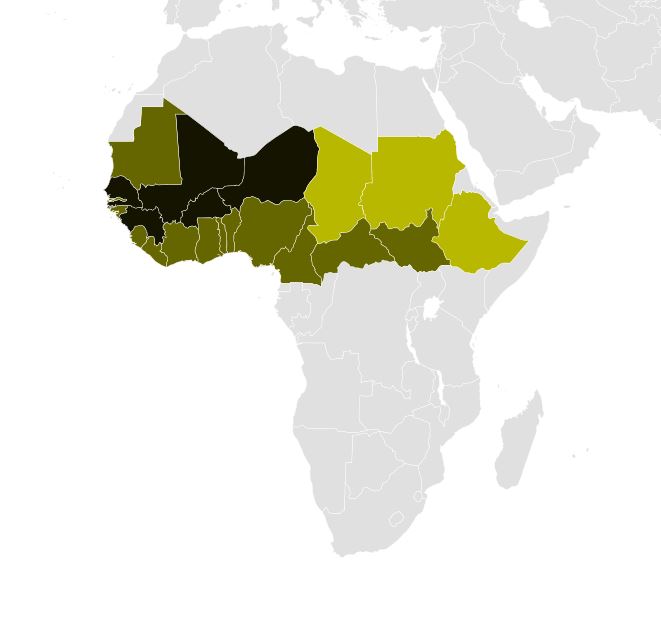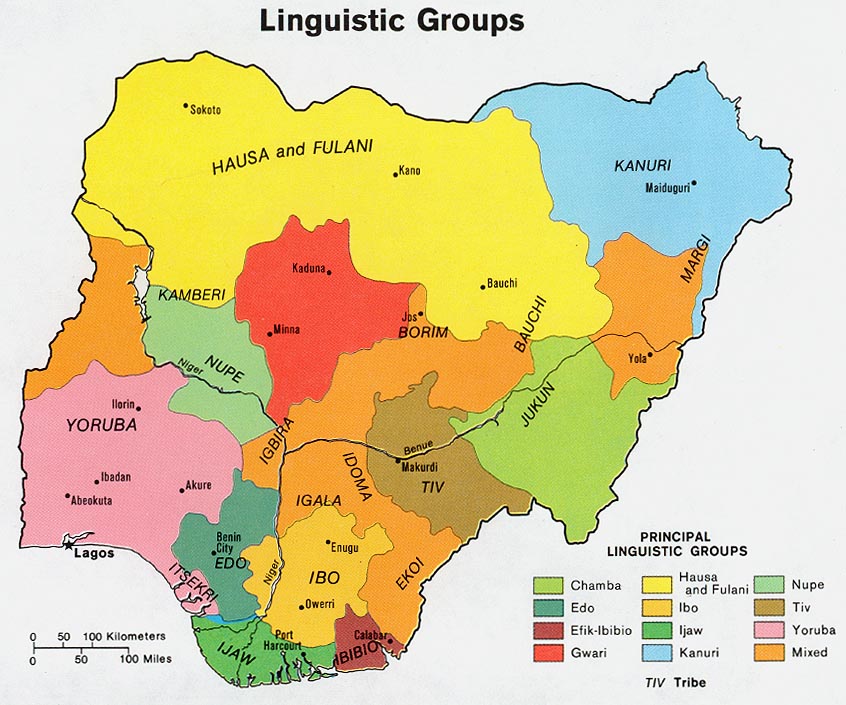|
Zermou
Zermou is a town and rural commune in Niger. Geography Zermou is located in the Sahel region. The average annual rainfall is around 350 millimeters. Zermou's neighbouring municipalities are Mazamni to the north, Guidimouni to the east, Hamdara to the south-east, Mirriah to the south-west and Gaffati to the west. The settlements in the municipality include 85 villages, 27 hamlets and 4 camps. The main town of the rural municipality is the village of Zermou. History Sultan Ibrahim dan Sélimane of Zinder, who ruled from 1822 to 1841 and from 1843 to 1850, encouraged Tuareg from the Aïr to settle in his sultanate. He made land available to their enslaved farmers, the Ikelan, near the villages of Zermou, Baban Tapki, Dogo, Droum and Gouna. At the end of the 19th century, the markets of Zermou and other villages in the region provided the important Zinder-based trader Malan Yaroh with the handicrafts, furs, animal skins and henna he needed for the trans-Saharan trade. The ... [...More Info...] [...Related Items...] OR: [Wikipedia] [Google] [Baidu] |
Mirriah
Mirriah is a town and urban Communes of Niger, commune in Niger. Geography Mirriah is located in the Sahel region, around 20 kilometres from the regional capital of Zinder. Mirriah's neighbouring municipalities are Gaffati to the north-west, Zermou to the north-east, Hamdara to the east, Wacha, Niger, Wacha to the south-east, Gouna to the south-west and Kolleram, Kolléram to the west. The municipality lies at an average altitude of 400 metres in a sandy lowland with a very low gradient. The municipality of Mirriah consists of an urban and a rural area. The urban municipality is divided into 16 neighbourhoods. These are called Ali Kader, Bakari, Camp de Garde, Dilari, Galadima, Kofal Bey, Makéra, Marafa, Marina, Quartier Administratif, Sabon Gari, Sarkin Makafi, Tchébani Boukari, Tchédia, Tchinkassari and Torawa. The settlements in the rural municipal area comprise 48 villages and 80 hamlets. History The name of the town comes from the Hausa language and means "voice". Mir ... [...More Info...] [...Related Items...] OR: [Wikipedia] [Google] [Baidu] |
Communes Of Niger
The Departments of Niger, Departments of Niger are subdivided into communes. As of 2005, in the seven Regions of Niger, Regions and one Capital Area, there were 36 ''départements'', divided into 265 ''communes'', 122 ''cantons'' and 81 ''groupements''. The latter two categories cover all areas not covered by ''Urban Communes'' (population over 10000) or ''Rural Communes'' (population under 10000), and are governed by the Department, whereas Communes have (since 1999) elected councils and mayors. Additional semi-autonomous sub-divisions include ''Sultanates'', ''Provinces'' and ''Tribes'' (''tribus''). The Nigerien government estimates there are an additional 17000 Villages administered by ''Rural Communes'', while there are over 100 ''Quartiers'' (boroughs or neighborhoods) administered by ''Urban Communes''. The territorial reorganisation of Niger's local administration, known informally as the ''Decentralisation process'', was carried out through a series of laws from 1998 ... [...More Info...] [...Related Items...] OR: [Wikipedia] [Google] [Baidu] |
Maurice Delafosse
Maurice Delafosse (20 December 1870 – 13 November 1926) was a French ethnographer and colonial official who also worked in the field of the languages of Africa. In a review of his daughter's biography of him he was described as "one of the most outstanding French colonial administrators and ethnologists of his time." Career Delafosse was born on 20 December 1870 in the village of Sancergues in central France. He was the son of René Françoise Célestin Delafosse and Elise Marie Bidault and had five siblings. Delafosse is known for his contributions to West African history and African languages. He began his study of Arabic in 1890 at the École des langues orientales with the renowned orientalist, Octave Houdas. He traveled to Algeria in 1891 with the Frères armés du Sahara, a Catholic organization concerned with combating the Trans-Saharan slave trade. Shortly afterwards, he spent one year in the French military as a zouave, second class, before returning to his formal s ... [...More Info...] [...Related Items...] OR: [Wikipedia] [Google] [Baidu] |
Nomad
Nomads are communities without fixed habitation who regularly move to and from areas. Such groups include hunter-gatherers, pastoral nomads (owning livestock), tinkers and trader nomads. In the twentieth century, the population of nomadic pastoral tribes slowly decreased, reaching an estimated 30–40 million nomads in the world . Nomadic hunting and gathering—following seasonally available wild plants and game—is by far the oldest human subsistence method known. Pastoralists raise herds of domesticated livestock, driving or accompanying them in patterns that normally avoid depleting pastures beyond their ability to recover. Nomadism is also a lifestyle adapted to infertile regions such as steppe, tundra, or ice and sand, where mobility is the most efficient strategy for exploiting scarce resources. For example, many groups living in the tundra are reindeer herders and are semi-nomadic, following forage for their animals. Sometimes also described as "nomadic" are vari ... [...More Info...] [...Related Items...] OR: [Wikipedia] [Google] [Baidu] |
Fula People
The Fula, Fulani, or Fulɓe people are an ethnic group in Sahara, Sahel and West Africa, widely dispersed across the region. Inhabiting many countries, they live mainly in West Africa and northern parts of Central Africa, South Sudan, Darfur, and regions near the Red Sea coast in Sudan. The approximate number of Fula people is unknown, due to clashing definitions regarding Fula ethnicity. Various estimates put the figure between 25 and 40 million people worldwide. A significant proportion of the Fula – a third, or an estimated 7 to 10 million – are pastoralism, pastoralists, and their ethnic group has the largest nomadic pastoral community in the world., Quote: The Fulani form the largest pastoral nomadic group in the world. The Bororo'en are noted for the size of their cattle herds. In addition to fully nomadic groups, however, there are also semisedentary Fulani – Fulbe Laddi – who also farm, although they argue that they do so out of necessity, not choice. The major ... [...More Info...] [...Related Items...] OR: [Wikipedia] [Google] [Baidu] |
Hausa Language
Hausa (; / ; Hausa Ajami, Ajami: ) is a Chadic language spoken primarily by the Hausa people in the northern parts of Nigeria, Ghana, Cameroon, Benin and Togo, and the southern parts of Niger, and Chad, with significant minorities in Ivory Coast. A small number of speakers also exist in Sudan. Hausa is a member of the Afroasiatic language family and is the most widely spoken language within the Chadic branch of that family. Despite originating from a non-tonal language family, Hausa utilizes differences in pitch to distinguish words and grammar. ''Ethnologue'' estimated that it was spoken as a first language by some 58 million people and as a second language by another 36 million, bringing the total number of Hausa speakers to an estimated 94 million. In Nigeria, the Hausa film industry is known as Kannywood. Classification Hausa belongs to the West Chadic languages subgroup of the Chadic languages group, which in turn is part of the Afroasiatic languages, Afro ... [...More Info...] [...Related Items...] OR: [Wikipedia] [Google] [Baidu] |
Arnold Henry Savage Landor
Arnold Henry Savage Landor (2 June 1865 – 26 December 1924) was an English painter, explorer, writer, and anthropologist. Life and career Arnold H. S. Landor was born to Charles Savage Landor in Florence, Italy, where he spent his childhood. The writer Walter Savage Landor was his grandfather. He left for Paris at age fifteen to study at the Académie Julian directed by Gustave Boulanger and Jules Lefebvre. He then traveled the world, including America, Japan, and Korea, painting many landscapes and portraits. His 1895 travel memoirs from Korea included accounts of appointments to portray two Princes of the ruling Min clan, each of whom received him more graciously than they had the British consul. The gifts from one of his sitters included a white leopard skin and a set of screens that were of especial rarity. Upon his return to England, he was invited to Balmoral Castle, Balmoral by Queen Victoria to recount his adventures and show his drawings. He later traveled to Nepa ... [...More Info...] [...Related Items...] OR: [Wikipedia] [Google] [Baidu] |
Ikelan
The Ikelan (Éklan/Ikelan or Ibenheren in Tamasheq; Bouzou in Hausa; Bella in Songhai; singular Akli) are a caste within Tuareg society, who were at one time slaves or servile communities in their native lands like Mauritania, Mali and Niger. The Ikelan's situation is somewhat analogous to that of the Haratin within Maure society in Mauritania. Like the Haratin, the name "Ikelan", and to a much greater degree ''Bouzou'' and ''Bella'', are exonyms (a name not used by that people themselves) with negative connotations. Historically the term "Ikelan" has been used to refer to the slaves of the Tuareg. Moreover, while they now speak the same language as Tuareg nobles, they are possibly of assimilated origin from other local neighbouring communities. Caste system The Tuareg people have in the past had a highly socially stratified society, with specific social roles (warriors, religious leaders) or professions (blacksmiths, farmers, merchants) assigned to specific castes. The t ... [...More Info...] [...Related Items...] OR: [Wikipedia] [Google] [Baidu] |
Aïr Mountains
The Aïr Mountains or Aïr Massif (Air Tamajeq language, Tamajăq: ''Ayǝr''; Hausa language, Hausa: Eastern ''Azbin'', Western ''Abzin'') is a triangular massif, located in northern Niger, within the Sahara. Part of the West Saharan montane xeric woodlands ecoregion, they rise to more than and extend over . Lying in the midst of desert north of the 17th parallel north, 17th parallel, the Aïr plateau, with an average altitude between , forms an island of Sahel climate which supports a wide variety of life, many pastoral and farming communities, and dramatic geological and archaeological sites. There are notable archaeological excavations in the region that illustrate the prehistoric past of this region. The endangered African wild dog (''Lycaon pictus'') once existed in this region, but may now be Local extinction, extirpated due to habitat fragmentation, human population pressures in this region. Geology The Precambrian to Cenozoic Aïr Mountains consist of p ... [...More Info...] [...Related Items...] OR: [Wikipedia] [Google] [Baidu] |
Tuareg People
The Tuareg people (; also spelled Twareg or Touareg; Endonym and exonym, endonym, depending on Tuareg languages#Subclassification, variety: ''Imuhaɣ'', ''Imušaɣ'', ''Imašeɣăn'' or ''Imajeɣăn'') are a large Berbers, Berber ethnic group, traditionally nomadic pastoralism, pastoralists, who principally inhabit the Sahara in a vast area stretching from far southwestern Libya to southern Algeria, Niger, Mali, Burkina Faso, and as far as northern Nigeria, with small communities in Chad and Sudan known as the ''Kinnin''. The Tuareg speak Tuareg languages, languages of the same name, also known as ''Tamasheq'', which belong to the Berber languages, Berber branch of the Afroasiatic family. They are a semi-nomadic people who mostly practice Islam, and are descended from the indigenous Berber communities of Northern Africa, whose ancestry has been described as a mosaic of local North Africa, Northern African (Taforalt), Middle Eastern, Genetic history of Europe, European (Early Eu ... [...More Info...] [...Related Items...] OR: [Wikipedia] [Google] [Baidu] |







